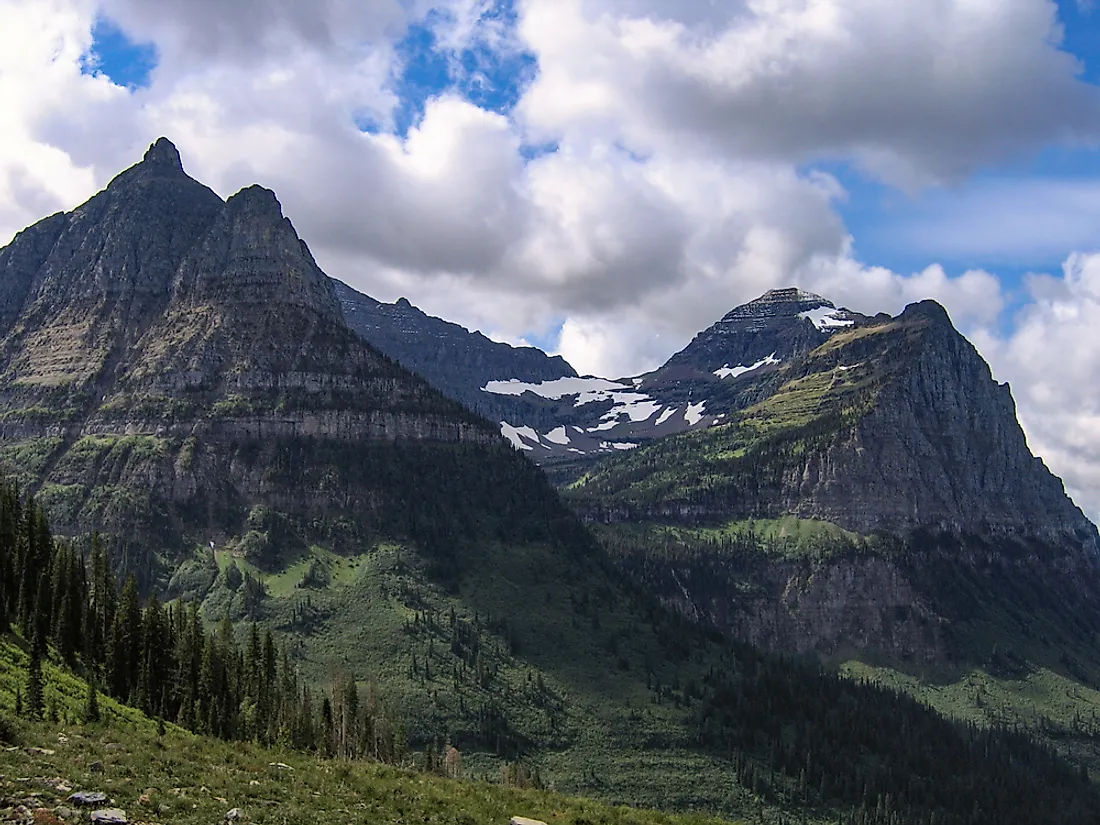What Is A Hanging Valley?

Hanging valleys are shallow canyons formed over a larger canyon, and are tributary valleys to the larger valleys. The hanging valleys are so named due to their positioning of being above main valleys. Hanging valleys form a characteristic U-shape above their respective main valleys, and have a steep wall at the point where the two valleys meet. These valleys are found in regions of high altitude, particularly in mountainous regions. The valleys are natural crevices through which rivers flow, and at the cliff meeting point where the two valleys meet the rivers dramatically drop to form waterfalls. In most cases, the hanging valleys are smaller than the main valleys. However, some hanging valleys are also found underwater in fjord systems where hanging fjords are shallower than the main fjords.
Formation Of A Hanging Valley
Hanging valleys are formed as a result of the erosion effects of glaciation. The valleys are thought to have been formed by two different glacier flows that interact with each other. A glacier with the relatively small amount of material flows into the main glacier with the more glacial material. The main glacier with huge volumes of glacier material ultimately erodes away either through abrasion or plucking, with vertical erosion forming extremely steep valleys with vertical slopes, while lateral erosion is widening the valley walls. The hanging valleys formed in this way have U-shaped walls. Rivers form as the snow from the upper slopes of the mountains melts, and flow along the hanging valleys. Upon reaching the mouth of the hanging valley, where the valley meets the steep walls of the main valley, the river drops to form a waterfall. Hanging valleys are also formed due to variations in the erosion rate on the slopes of the mountains. Factors such as nature of the underlying rocks could cause the erosion rate on the tributary valleys to be higher than that of the main valleys, with the tributary valleys being made up of rock more resistant to erosion than the main valleys. Over time, the difference in erosion rates causes the two types of valleys to have different depths. In other cases, the main valley could be older than the hanging valley and formed through glacial erosion while the more recent hanging valley being formed through water erosion by a river.
Examples Of Hanging Valleys
Hanging valleys are found in mountainous regions, and Montana’s Glacier National Park has one major hanging valley; the Birdman Woman Falls. California’s Yosemite National Park is home to numerous hanging valleys. Many of the hanging valleys feature high waterfalls, with some of the highest in the United States being found in the Yosemite National Park. Some hanging valleys in the region are Bridal Veil Falls, Ribbon Falls, and the Yosemite Falls. The latter has a vertical drop of 2,425 feet, the highest in the state and among the highest in the country. Some scholars believe the mountainous terrain in the region experienced constant glacial flows and led to the formation of these hanging valleys. However, another theory has it that the flow of the Mercer River was behind the formation of Yosemite’s hanging valleys.











